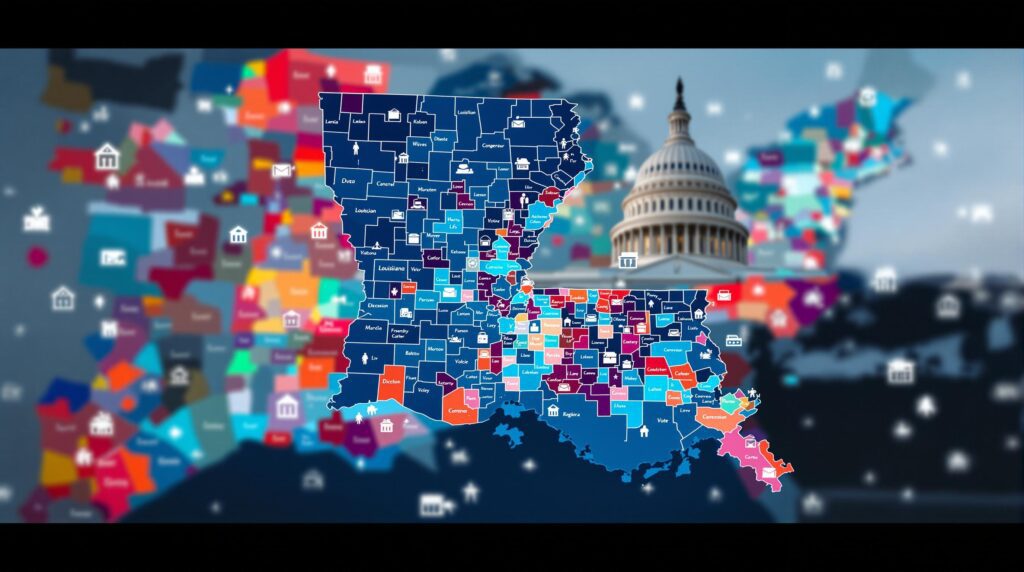The U.S. Supreme Court is stepping into a critical dispute that may determine not only Louisiana’s political landscape but also how the entire nation draws electoral maps moving forward. At the heart of this heated conflict is Louisiana’s newly adopted congressional district map, designed after the 2020 Census to feature a second majority-Black district. The inclusion, however, is under fierce scrutiny, accused by critics of racial gerrymandering—a claim that may profoundly impact minority representation across America’s political spectrum.
Balancing Rights and Representation
In stark contrast to conservative assertions, voting rights advocates argue that Louisiana’s district alterations are necessary adjustments reflecting demographic reality. Louisiana’s Black population constitutes roughly one-third of its residents. Yet historically, representation has failed to reflect this demographic truth, with only one of the state’s six congressional districts previously featuring a predominantly Black electorate.
Civil rights leaders view the creation of another majority-Black district as essential to correcting historical inequities. Alanah Odoms, Executive Director of ACLU of Louisiana, underscores the urgency of this issue beautifully, remarking, “Inclusive representation is not just an ideal, it is the foundation of a healthy democracy—anything less would be a betrayal of democracy itself.” To Odoms and many like her, any verdict undermining this perspective would weaken fundamental voting protections that protect minority communities.
On the flip side, Louisiana’s attorneys argue complexity, contending there is inherent conflict between adhering to civil rights law and maintaining electoral fairness for all voters. They pushed back vigorously in court arguments, pleading for clarity and stability in the law, stating fervently, “This hamster wheel will not stop spinning” without judicial resolution. This reveals the tension embedded in redistricting—juggling strict adherence to the Voting Rights Act while avoiding alleged discrimination against non-minority electorates.
Defining a New Redistricting Standard
Amid these dueling claims lies a longstanding American challenge: ensuring that legislative maps respect racial fairness without violating constitutional provisions against racial discrimination. This Supreme Court ruling carries profound implications beyond Louisiana alone, potentially guiding redistricting standards nationwide.
The case features two starkly competing federal court decisions, making the Supreme Court’s intervention especially critical. One prior court ruling emphasized the necessity of creating a second majority-Black congressional district. Simultaneously, another ruling labeled this approach as racial gerrymandering, forbidden under the Equal Protection Clause of the 14th Amendment—highlighting the persistent ambiguity and controversy surrounding racial considerations in redistricting. Quite simply put, the nation’s highest court now bears the monumental task of deciding exactly how states can identify and rectify historical racial disparities without crossing constitutional lines.
“Beyond Louisiana, the Court’s verdict has the potential to either strengthen or critically undermine voting rights protections nationwide.”
Historically, redistricting has frequently served political objectives, allowing dominant political forces to secure desired electoral outcomes. Indeed, critics suspect underlying political motivations even in genuine civil rights initiatives. Louisiana conservatives challenge the district additions not merely on constitutional grounds but also based on fears of partisan power shifts that might negatively influence Republican representation. Thus, the situation intertwines racial equality concerns with traditional partisan anxieties—a common dilemma reflecting America’s complex electoral past both before and after the Voting Rights Act.
The Outcome’s Wide-Ranging Impacts
The political stakes at hand are unmistakably high. If the Supreme Court upholds the new Louisiana map, it could embolden other states to follow suit, paving the way for greater minority representation—and, perhaps, a more inclusive and diverse political landscape overall. Conversely, a ruling against the district map would send chills throughout the civil rights community and minority populations nationwide, signaling potential judicial retrenchment from historical advancements attained through decades of activism and litigation.
Such a decision could significantly impact the 2026 midterm elections, casting a shadow over electoral fairness perceptions among voters. Moreover, it would signal to states nationwide committing to equitable representation policies, perhaps hesitatingly, that racial considerations in redistricting may face intensified legal challenges.
Collectively, these issues underscore the profound democratic question at stake: whether representation truly mirrors the racial and ethnic diversity of our nation or retreats into exclusionary factors that disenfranchise voices demanding acknowledgment.
As the country awaits the Supreme Court’s ruling, coming amidst heightened sensitivity around racial inequity and political fairness in elections, the nation anxiously observes. Will the justices secure historical voting right gains, or will they adopt a starkly different trajectory anchored to rigid traditionalist interpretations?
Whichever direction the Court takes, one thing is certain—this verdict, entirely centered around Louisiana yet stretching far wider, could reshape America’s political and civil rights trajectory for decades to come.

